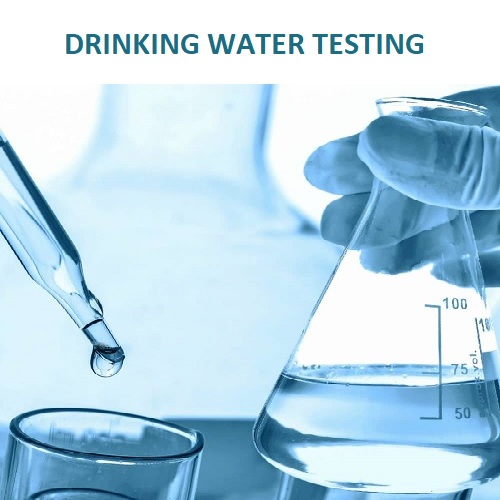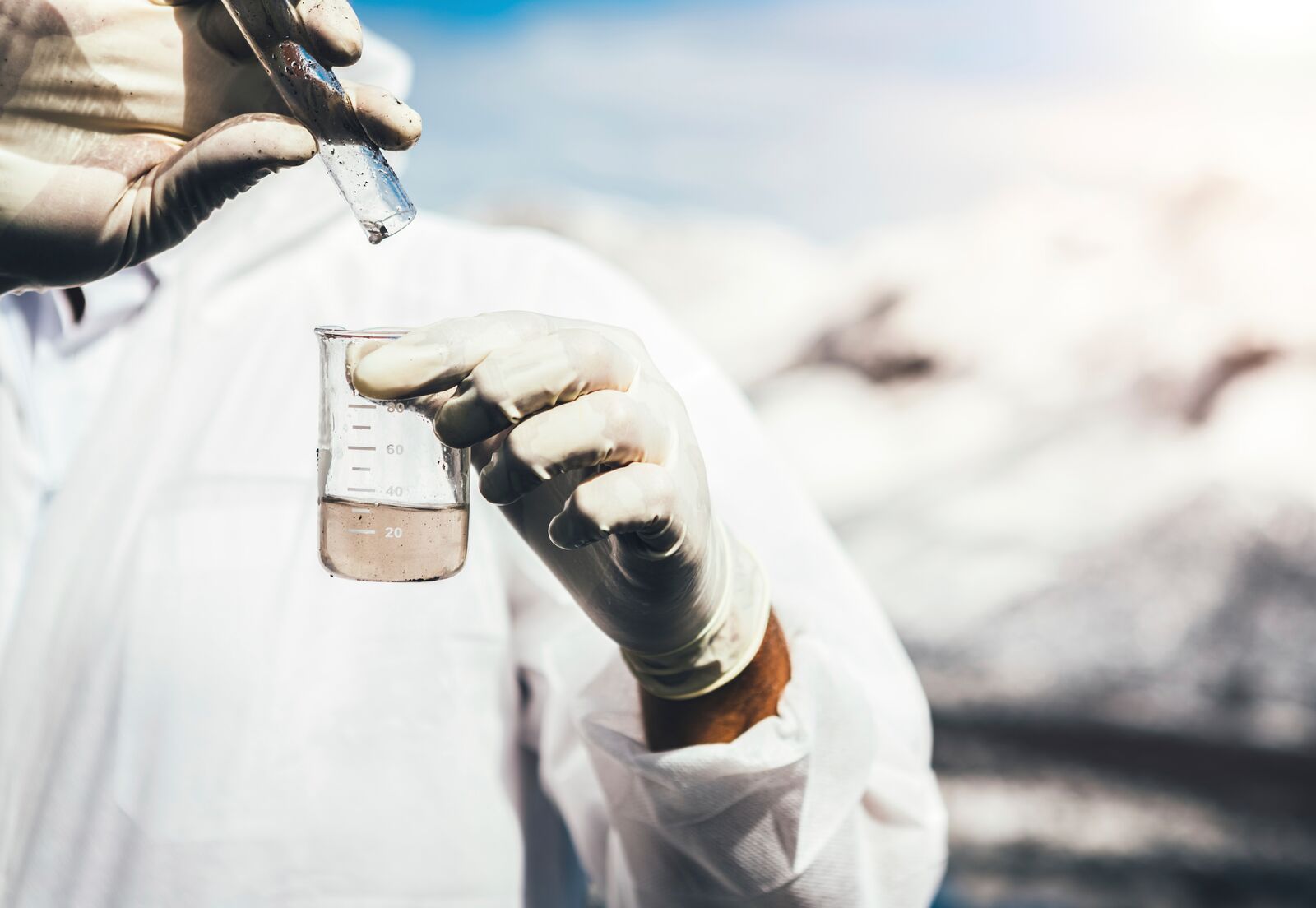The Value of Choosing Water Testing Services Tampa for Your Health and wellness
The Value of Choosing Water Testing Services Tampa for Your Health and wellness
Blog Article
Discover What Is Included in Water Testing and Just How It Ensures Safe Drinking Water
Comprehending the ins and outs of water screening is critical in ensuring the top quality and safety and security of our alcohol consumption water. With a precise examination of physical, chemical, and microbiological elements, water testing recognizes potential pollutants that might present health risks. From the visibility of heavy steels to hazardous microbes, each examination part plays a critical duty in preserving the integrity of our water supply. Advanced strategies like chromatography and spectrometry boost the precision of these analyses. Just how do these processes convert into the regulatory structures that assure safety and security in our day-to-day usage?
Key Components of Water Testing
Water screening is an essential process that entails several essential parts to make certain the security and high quality of alcohol consumption water. In addition, ensuring the pH equilibrium of water is important, as it affects the water's corrosiveness and the efficiency of disinfection procedures.
Another substantial element involves microbiological evaluation, where water examples are taken a look at for the visibility of bacteria such as germs, viruses, and protozoa. This analysis is important to identify biological hazards that might posture health and wellness risks if taken in. In addition, chemical analyses are conducted to spot natural and not natural materials, such as hefty steels, nitrates, and pesticides, that may be existing in the supply of water.

Spotting Damaging Pollutants
Spotting dangerous pollutants in drinking water is a fundamental aspect of safeguarding public health. This procedure involves recognizing possible hazards that can compromise the top quality and safety of water products. Pollutants can range from microorganisms such as microorganisms, infections, and protozoa, to inorganic substances like lead, arsenic, and nitrates, along with natural contaminants consisting of pesticides and industrial chemicals. Each kind of impurity poses distinct health risks, making their detection essential to guarantee the water taken in by the public is risk-free.
Water testing for impurities is typically conducted by regulatory agencies and water utilities, employing a mix of area sampling and research laboratory analysis. These analyses are made to detect both normally happening substances and anthropogenic contaminants that may have gone into the water system with farming overflow, industrial discharge, or maturing facilities. Normal surveillance is crucial, as contamination levels can vary because of environmental adjustments, seasonal variations, or human activities.
The recognition of dangerous contaminants educates required actions, such as water treatment interventions or public advisories, to reduce threats. Early detection is essential to avoid damaging health results, ranging from intestinal diseases to long-term problems like cancer cells, thus making sure the proceeded safety and security of alcohol consumption water.

Chemical Evaluation Techniques
In the realm of making certain secure drinking water, chemical analysis techniques play a pivotal function in identifying and evaluating impurities. These techniques are essential for detecting a vast variety of chemical compounds, consisting of heavy steels, chemicals, and industrial toxins, which can posture considerable health risks. Methods such as atomic absorption spectroscopy (AAS) and inductively coupled plasma mass spectrometry (ICP-MS) are typically used to measure trace levels of steels like arsenic, mercury, and lead. These tools provide exact quantification, facilitating compliance with regulative requirements.
Gas chromatography-mass spectrometry (GC-MS) is another essential technique, especially for organic compounds. It divides intricate mixtures and identifies semi-volatile and unstable organic substances, guaranteeing that pollutants like benzene and toluene are within secure limitations. High-performance fluid chromatography (HPLC) is similarly utilized for non-volatile substances, including certain chemicals and drugs.
Ion chromatography is employed to establish concentrations of cations and anions, such as nitrates and sulfates, which are essential in assessing water top quality. These chemical analysis strategies collectively guarantee that alcohol consumption water continues to be safe by discovering deviations from established pureness norms, consequently securing public wellness. Making certain accuracy and precision in these tests is critical find this to preserving the honesty of water safety and security analyses.
Microbiological Checking Approaches
Accurate microbiological testing is critical for securing public wellness by ensuring that alcohol consumption water is without hazardous virus. This procedure entails identifying and identifying microorganisms such as germs, infections, and protozoa that may pollute water products. Typical pathogens consist of Escherichia coli, Giardia, and Cryptosporidium, each posing considerable health risks.
A number of methods are used in microbiological testing to identify these hazards. The membrane layer purification method is often made use of, involving water going through a filter that captures bacteria, which are after that cultured to identify their existence and focus. The multiple-tube fermentation technique enables the quantification of coliform germs making use of a collection of dilution and incubation steps.
Developments in innovation have introduced molecular methods such as polymerase domino effect (PCR), which enables the extremely particular and quick detection of pathogens by magnifying their genetic product. Enzyme-linked immunosorbent assays (ELISA) additionally provide a method to spot pathogens by determining specific healthy proteins or antigens.
These varied methods are vital for comprehensive water top quality evaluation, making sure that water therapy procedures are reliable and that distribution systems maintain security. By employing these microbiological testing techniques, prospective health and wellness dangers can be identified and alleviated promptly.

Importance for Public Wellness
Guaranteeing the microbiological security of alcohol consumption water directly impacts public health by avoiding the spread of waterborne diseases. Virus such as germs, infections, and protozoa can bring about illnesses like cholera, dysentery, and intestinal infections (Water Testing Service). The implementation of detailed water testing procedures is extremely important in identifying and mitigating these risks, thus safeguarding communities from possible outbreaks
Normal water screening not just detects microbial contaminants yet likewise examines chemical and physical specifications that can affect wellness. As an example, extreme degrees of nitrates or heavy metals such as lead can posture significant health threats, specifically to at you can try this out risk populations like babies and expecting women. By determining these threats early, water screening enables timely interventions, ensuring the water system continues to be within risk-free intake requirements.
Furthermore, water testing plays an important role in preserving public self-confidence in community water systems. For policy manufacturers and health see and wellness officials, the data derived from water testing notifies decisions on infrastructure investments and public health and wellness techniques, making certain resources are directed where they are most required.
Conclusion
Water screening acts as a necessary device for ensuring the safety and top quality of drinking water with extensive evaluation of its physical, chemical, and microbiological homes. By finding dangerous pollutants, such as heavy steels and pesticides, and utilizing advanced methods like chromatography and spectrometry, water testing facilitates the identification of prospective health and wellness threats. The implementation of extensive testing methods is crucial for keeping conformity with safety requirements, inevitably safeguarding public health and wellness and strengthening confidence in community water supply.

By recognizing these dangers early, water testing allows prompt interventions, making sure the water supply stays within secure consumption standards.
Water screening serves as a vital mechanism for guaranteeing the security and high quality of alcohol consumption water via extensive analysis of its physical, chemical, and microbiological properties.
Report this page